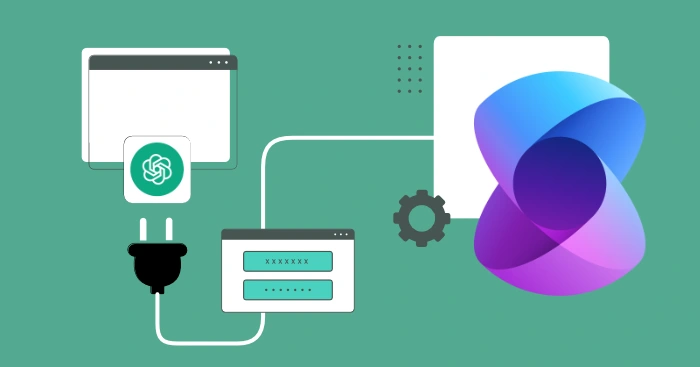Building an AI-driven business used to be like trying to launch a rocket with duct tape and a dream — messy, expensive, and likely to explode in your face. Back in 2019, you needed a team of PhDs, a few machine learning unicorns, and a VC check with at least two commas. Today? It’s more like assembling IKEA furniture.
You just need the right tools, a basic understanding of how they fit together, and yes — a bucket of money.
Still less than hiring a dev team in San Francisco.
The Point Is: The Barrier to Entry Has Dropped. Way Down
With a bit of brain power and a fat enough budget, you can slap together your very own AI companion site — something in the vein of Candy AI, Replika, Kupid, or whatever new name sounds like a dating app and a sci-fi series had a baby.
But what are those tools? What exactly powers the flirty texts, sultry voice notes, and weirdly accurate emotional support at 1 a.m.?
Well, let’s start with the product itself.

The Four Pillas of an AI Companion; Text, Voice, Image… Video
At first glance, it’s simple: text chat, voice messages, image generation, maybe even video if you’re feeling spicy. But under the hood, these aren’t just little widgets. They’re carefully wired pieces of infrastructure powered by some of the biggest LLMs, diffusion models, and speech engines out there.
Here’s the quick breakdown (and yes, emotional plumbing is involved):
- Chat: The heavy lifting is almost always done by an LLM — think GPT-4, Claude, or a fine-tuned version of LLaMA 2. Roleplaying? That’s prompt engineering plus memory systems. Some platforms build entire “character brains” with personality sliders and backstory inputs. Think of it as Dungeons & Dragons meets Silicon Valley.
- Image generation: Say hello to Stable Diffusion, the poster child for generating slightly-too-perfect selfies and anime girlfriends with implausible eye sizes. Some sites use custom-trained checkpoints or blend models to add a signature aesthetic — like “vintage Instagram baddie” meets “cyberpunk schoolteacher.”
- Voice generation: Replica Studios, ElevenLabs, or in some cases, homegrown TTS systems based on Tacotron or VITS. These voices don’t just read out your messages — they purr, coo, or give motivational speeches like your therapist, if your therapist charged by the syllable.
- Video generation: Still new territory, but tools like SadTalker or Pika Labs let these AI girlfriends make eye contact, tilt their heads, and say “goodnight” with enough facial emotion to make you question your real-life relationships.
So that’s the product. Now you just need somewhere to plug it all in, right?
No.
You need to find a monetization model. That’s your next step.
It doesn’t make sense to go ahead and spend hundrets of thousands of dollars on build a back, or front end, without knowing how you’ll make that money back.
Love Isn’t Free, That’s Why you Need a Monetization Stack
Before your AI girlfriend whispers sweet nothings into someone’s ear, she better have a business model. And no, “going viral on TikTok” doesn’t count.
AI companion platforms might feel like futuristic playgrounds, but under the hood they run on the oldest software principle in the book: if it talks, it costs. Every flirty message, every AI-generated wink, every sultry voice line? That’s money — in API calls, compute power, and dev hours.
So unless you’re planning to run this thing as a charity for the emotionally curious, you’ll need to figure out how to turn artificial affection into real-world cash.
Here’s how the top players are already doing it.
The Subscription Model is the Bread-and-Butter of AI Companion Apps
Monthly, quarterly, or yearly plans that unlock “premium features” like longer conversations, better memory, voice replies, or NSFW content (depending on your market and, let’s be honest, your morals).
Think of it like Tinder Gold — but instead of seeing who likes you, you’re paying to make your AI like you a little more believably.
Tokens are the Casino Chips of Digital Love
You start with a free chat, maybe even a voice note or a cheeky selfie. But if you want that voice, that outfit, or a custom image of her wearing your football team’s jersey and holding a cake with your name on it? Time to drop some tokens.
These can be bought in bundles, with discounts the more you commit. Some sites even toss in daily free tokens like little dopamine snacks to keep users coming back.
Content Packs & Add-ons
Some platforms sell “packs” — think of them as DLCs for your AI companion. Want a Halloween personality mode? A romantic trip to Paris scenario pack? A memory expansion so she can remember that one inside joke forever?
Just swipe your card.
These are often pre-scripted interactions, carefully crafted to give the illusion of depth without burning API calls. Smart move.
Custom Requests
A newer trend: hyper-personalized experiences. Some platforms offer one-on-one customization for whales (you know, the high spenders), like custom-trained voices, unique visual styles, or dedicated server time. In the future, don’t be surprised if someone offers a “limited edition AI girlfriend” with only 10 copies worldwide. NFT vibes but emotionally clingier.
So, Now You’ve Figured Out How to Make Money
Good on you, congrats, you’re officially pimping out pixels. But let’s be real: you can’t just slap a paywall on top of a chatbot and call it a business.
Behind every seductive voice message and emotionally intelligent reply is an ugly, gritty stack of servers, APIs, token meters, memory buckets, and middleware that holds it all together like digital duct tape.
You’ve got the product. You’ve got the business model. Now it’s time to see what powers it all behind closed doors.
Let’s talk about the back end — and not the kind that sends heart emojis.
The Back End of Your AI Companion
If the AI girlfriend is the star of the show — always polished, charming, and emotionally available — then the backend is the overworked crew in the shadows keeping her from glitching mid-sentence or forgetting your name halfway through a love confession.
It’s easy to focus on the glitz of AI voice notes and 4K-generated selfies, but none of it works without a backend that’s sturdy, scalable, and ready to juggle a thousand lonely hearts at once. You’re not just building a chatbot. You’re orchestrating hundreds of concurrent sessions, all expecting real-time responses, persistent memory, emotional continuity, and zero downtime. That’s not just load balancing — that’s digital relationship management at scale.
So what kind of stack keeps this illusion of love afloat?

API Layer (a.k.a. The Brainstem)
At the center of your operation is an API layer that keeps all the moving parts connected. Most teams use Node.js or Python (FastAPI or Flask) to create scalable REST or WebSocket APIs. These APIs handle user input, route it to the right LLM, format responses, and return it faster than most humans text back. Want to get fancier? Look into LangChain or Semantic Kernel — orchestration frameworks that help build more modular, intelligent backends. They’re especially useful if you’re managing multiple AI models or memory systems.
Real-Time Databases (Her Memory Lane)
For real-time data like chat logs, personality preferences, saved outfits, or emotional triggers, most platforms lean on Supabase, Firebase, or MongoDB Atlas. Supabase is becoming a favorite thanks to its Postgres core, real-time subscriptions, and built-in auth features — plus it feels like Firebase for grownups. Firebase still dominates for mobile-first platforms, thanks to its tight integration with Android and iOS SDKs. If you want to experiment with graph-style relationships (think “which user said what, and when, and to whom”), take a peek at Neo4j.
In-Memory Caching (Short-Term Memory)
Nobody wants an AI that forgets what you said three seconds ago. That’s where Redis comes in. It’s lightning-fast, perfect for storing short-term memory, session state, or the most recent messages in a conversation.
Some setups use Redis to simulate “working memory” — a key concept in more advanced emotional roleplaying AIs.
Authentication & Session Handling (The Bouncer)
You’ll want secure, persistent sessions with token handling, rate limits, and maybe a way to ban people who get… too weird. Many teams use Supabase Auth, Firebase Auth, or Auth0. Combine that with JWT-based session tokens, and you can scale while keeping things (mostly) sane.
Pro tip: If you’re planning NSFW functionality, look into age verification APIs — trust us, the lawyers will thank you later. Research services like Veridas, Ondato or Shufti Pro.

Moderation & Safety Filters (Your Moral Compass, Sadly)
Here’s the part everyone pretends doesn’t exist: content moderation. When people are alone with bots, things get unhinged fast. You’ll need a moderation layer, whether it’s OpenAI’s built-in moderation API, Google Perspective API, or a home-brewed filter system based on keyword blacklists and embeddings.
If you’re planning to launch globally, take a look at HIVE.ai — they offer region-specific filtering tuned for cultural norms and legal compliance.
LLM Orchestration (The Puppet Master)
This is where your actual “AI” comes to life. The backend constructs dynamic prompts (based on character profiles, memories, user behavior), selects the right model (GPT-4 for premium users, LLaMA for budget tiers), and manages token counts like a Vegas accountant.
Want to experiment here?
Research Transformers Agents or ReACT-style prompting — both are cutting-edge techniques to give your AI more structure and reasoning ability. Don’t forget about latency — every API call costs time, and in romance, timing is everything.
Scheduling, Logging & DevOps (The Boring but Vital Stuff)
Your backend isn’t just about AI — it’s about uptime. You’ll need robust logging (try Datadog, Sentry, or even OpenTelemetry if you’re fancy), load balancing, and maybe even horizontal scaling via Kubernetes if you’re planning to go big.
For leaner setups, Vercel, Render, or Fly.io offer solid PaaS solutions that handle the nasty bits for you.
Once the backend is humming, it’s tempting to call it a day — but you’re only halfway there. All the token streaming, caching, and orchestration in the world won’t matter if your front end feels like a 2012 dating app mashed with a chatbot from customer support.
So, You’ve Built the Brain? Now Give It a Face
This is where your users actually meet the AI — where the fantasy is delivered, where the illusion becomes tactile. Your front end isn’t just UI — it’s her bedroom, her café, her world. It’s where every message, image, and whisper becomes believable.
So let’s walk out of the server room and into the glow of the interface. Next up: the front end. Where the magic gets dressed.
Onto The Front End: Where the Magic Gets Dressed
Alright, you’ve built the emotional brain and coded the loyal heart. Now it’s time to slap on a face users won’t bounce off in three seconds. Because let’s be honest — you could be piping GPT-4 through a nuclear reactor and it wouldn’t matter if your front end looks like a high school JavaScript project.
This is where your AI companion actually comes to life. Where UI meets fantasy, and every pixel, animation, and transition either sells the illusion… or breaks it entirely.
If the backend is all logic and muscle, the front end is the makeup artist, lighting crew, and costume designer rolled into one. And if you mess this part up, users won’t care how much you’re paying OpenAI per token.
Let’s break down what the top platforms are doing — and what you need to consider.
You’ll see a lot of React and Next.js in the wild
They’re fast, component-friendly, SEO-aware, and blessed with a deep plugin ecosystem. If you’re building mobile-first (which you absolutely should be — this is intimate, on-the-go tech), consider pairing it with React Native or Expo for mobile apps.
For something even lighter, SvelteKit and Vue 3 + Vite are gaining ground, especially when fast reactivity and lower bundle sizes are a priority. Want SSR (server-side rendering)? Go with Next.js. Want pure speed with zero ceremony? Look into Qwik — it’s bleeding-edge, but made for interaction-heavy apps like these.

What about Styling?
Most of these platforms run on Tailwind CSS. It’s fast to prototype, deeply customizable, and makes your UI look like it cost more than it did. Some go further and implement Headless UI for accessibility or Framer Motion for animations — because if she’s gonna blink, she better do it smoothly.
Bonus: Want to emulate that ultra-polished, soft glow “AI aesthetic” look? Look at Glassmorphism + Radial Gradients + Layered Blur Cards. Yes, it’s 2025’s version of skeuomorphism, and yes, it works.
Every Tap, Scroll, or Message Needs to Feel Instant
Nobody wants to send a love note and wait five seconds for it to load. Use WebSockets for real-time messaging (Socket.IO, Ably, or Firebase’s native real-time layer). Add typing indicators, read receipts, and delayed typing effects so it feels like a real person is thinking.
Pro tip: Use artificial typing speed calculations — randomize keystroke delays based on the tone of the message. It’s tiny UX details like that which make people fall for a bot.
Don’t Forget about Avatar Rendering
If your AI companion has a face (and she probably should), then rendering that face well is a whole new game.
Some use 3D avatars with tools like Ready Player Me, Live2D, or even Three.js for full-blown 3D character rendering. Want realism? Look into DeepMotion for live body movement or D-ID if you’re into creepy photo-based animation. For anime vibes? Check out Waifu Diffusion pipelines + ComfyUI workflows.
Just don’t forget device optimization. Not everyone’s running a gaming rig, and if her face drops the frame rate to 12 fps, the spell is broken.
Memory UI & Emotional Feedback
High-end front ends now include memory visualizations — like a timeline of emotional moments, gift history, or even “mood graphs.” These are usually implemented as React components tied to backend memory logs. Consider tools like Chart.js or Recharts to visualize emotional progressions or conversation stats — like Spotify Wrapped, but for your robot girlfriend.
Also, don’t forget emotional feedback. A simple “She seems distant today” status update, based on memory usage or token balance, adds just enough intrigue to keep users engaged.
So, What Have We Learned?
We went from nothing to a fully operational AI companion system — complete with real-time chat, animated avatars, simulated affection, and a monetization pipeline slick enough to make your accountant blush. Along the way, we named names, dropped frameworks, poked fun at Redis, and hopefully gave you a clearer picture of what’s actually going on behind the flirty UI.
You now know how it works. You know how it makes money. You know what it takes to scale. And if you’re still reading, you’ve probably already Googled at least one of the tools mentioned here — which means you’re dangerously close to building something yourself.
So whether you’re launching the next Candy AI clone, experimenting with lonely-friendly UX, or just reverse-engineering emotional intimacy with cloud functions — you’re not starting from zero anymore.
You’ve got the map. You’ve got the parts. You’ve even got the warnings.
Now go build something unsettling. I mean… disruptive.



































